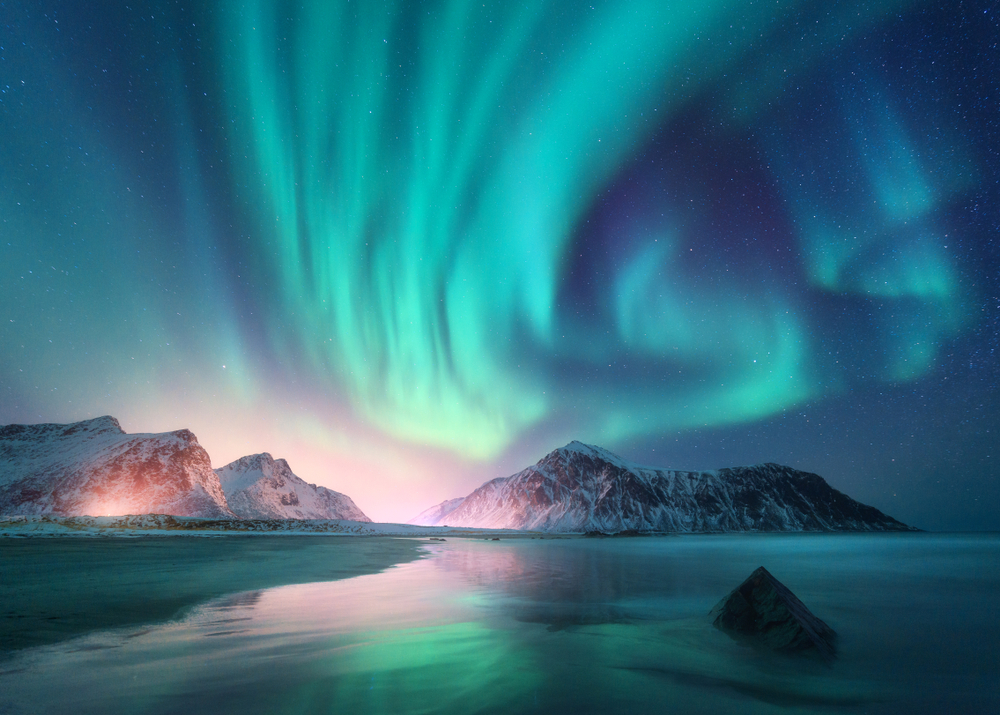
How do you do astrology at the North Pole? Contrary to what you may think, this isn’t a trick question. Astrologers encounter unique problems drawing up birth charts for people born at high latitudes or near both polar circles. As communication technologies continue to connect us, astrologers work with clients born in the southernmost reaches of Argentina and Chile, along with those far north in Canada, Norway, and Siberia. So how do you do a birth chart properly when the ascendant moves backward or the Sun never rises? The answers aren’t as easy as you may think.
Time and Place in Birth Charts In Astrology
Astrologers create charts to reflect the movement and positions of planets and points in the sky. When drawing someone’s natal chart, you need the precise date, place, and time of birth. How does this work in a practical sense? Take two people born on August 14 in the same year – Person A at 4 p.m. and Person B at 10 p.m. Their charts look similar in many ways but different in others. For instance, they probably won’t have the same rising sign. Why? Because it changes every two hours thanks to our 24-hour day and 12-sign zodiac.
Now, let’s say that Person A was born in Nairobi, Kenya, and Person B’s birthplace was Milwaukee, Wisconsin. Both individuals may also have planets sitting in the same signs. But because the ascendant determines the first house’s placement, those zodiac signs will be in different spots on the chart wheel. In our example, Person A’s ascendant is in Capricorn but Person B has an Aries rising sign.
Latitude, Longitude, and the Sun
Eratosthenes, the same Greek mathematician who calculated Earth’s circumference, was also the first to propose a mapping schema using both latitude and longitude. Our modern system came from Greenwich’s Royal Observatory, adopted by 22 countries in 1884. We have undeniable proof that Earth is a sphere, widest at its equator and narrowest at the poles. Its 23.5-degree axial tilt also contributes to the Sun’s position in our skies at any given location.
You can observe how the sky’s view changes wherever you go on Earth. But you’ll notice drastic changes at extreme latitudes. And you can’t get more extreme than the Arctic and Antarctic polar circles, located at 66.6 degrees north and south respectively. The Sun’s altitude is much lower in those areas. It also doesn’t rise or set at the poles but remains at a constant altitude for each 24-hour period.
How the Sun’s Position Affects Birth Charts
Sure, the Sun’s behavior can seem strange in polar regions. But what does this have to do with astrology? As Astrodienst explains, astrologers would have problems plotting the ascendant, midheaven, and some horoscope houses. On a natal chart, the horizon line connects the ascendant and descendant. The midheaven, which represents career and public image, normally sits far above this line at the highest point on the chart. But in the Arctic Circle, it can end up below the horizon.
The ascendant also acts weird, ending up in the west instead of the east. This defies the original idea of a “rising sign” because it’s not actually rising in polar regions. The ascendant can also be retrograde, suddenly jump by 180 degrees, and fail to even move through all 360 degrees of the zodiac.
Geography’s Impact on Astrology
Astrology is a changing art, incorporating new information about our universe as it’s uncovered. Ancient Babylonians weren’t thinking about the North Pole when they charted planets’ movements thousands of years ago. But as astrology and astronomy are closely linked, geography affects how we do birth charts and horoscopes. Astrologers repeatedly show that they have the creativity and flexibility to meet each challenge as it comes.



